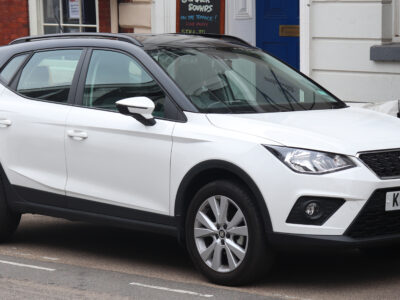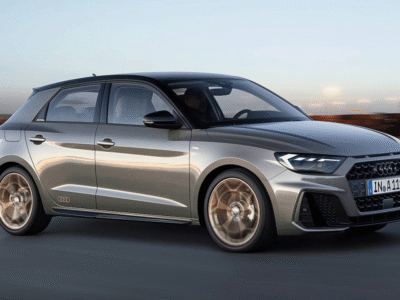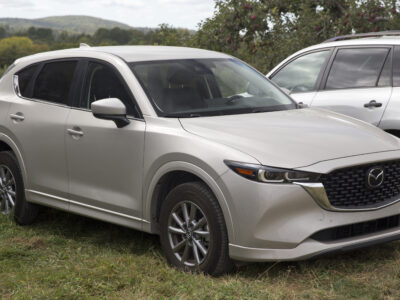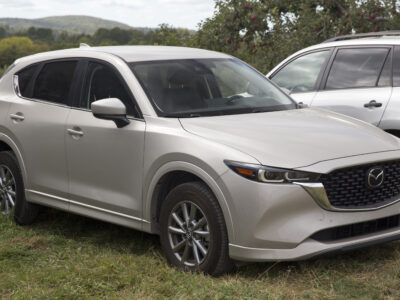
Hyundai i10 Miles Per Gallon (MPG) – Complete Fuel Efficiency Guide

When it comes to affordable city cars that balance efficiency, performance, and practicality, the Hyundai i10 consistently stands at the top. Known for its compact design and impressive reliability, this small hatchback also delivers remarkable fuel economy across multiple generations and engine types. In this comprehensive guide, we explore every detail about the Hyundai i10 miles per gallon (MPG) ratings, real-world fuel consumption, and efficiency comparisons across trims and years.
- Overview of Hyundai i10 Fuel Efficiency
- Understanding MPG in Simple Terms
- Hyundai i10 Engine Options and Their Impact on MPG
- Hyundai i10 Miles Per Gallon by Model Year
- Pre-2020 Models: i10 Efficiency Evolution
- BlueDrive Technology Explained
- Real-World vs. Official MPG: What to Expect
- Hyundai i10 Fuel Consumption in Litres per 100 km
- Tips to Maximize Fuel Economy in Your i10
- How the Hyundai i10 Compares to Rivals
- Final Thoughts
- FAQs
Overview of Hyundai i10 Fuel Efficiency
The Hyundai i10 was engineered for cost-effective urban driving. Its light frame, aerodynamic styling, and refined petrol engines ensure that it delivers some of the best MPG figures in the city car segment. Depending on the variant and driving conditions, the i10 can achieve between 45 and 70 miles per gallon — a level of efficiency that rivals premium European competitors like the Volkswagen Up! and Toyota Aygo.
The most economical model, the 1.0 SE BlueDrive, can deliver up to 65.7 mpg combined, while newer N Line T-GDi versions provide a punchier performance with a respectable 52.3 mpg average.
Understanding MPG in Simple Terms
MPG (Miles Per Gallon) indicates how far a car can travel on a single gallon of fuel. The higher the MPG, the more efficient the car. The Hyundai i10’s fuel efficiency varies depending on:
- Engine size (1.0L vs 1.2L)
- Transmission (manual or automatic)
- Driving conditions (city vs highway)
- Trim level (SE, SE Connect, Premium, N Line)
Hyundai i10 Engine Options and Their Impact on MPG
The i10 range typically includes:
- 1.0-litre 3-cylinder petrol engine
Known for lightweight efficiency and low emissions.
Average MPG: 53–65 mpg - 1.2-litre 4-cylinder petrol engine
Slightly more power but a marginal drop in efficiency.
Average MPG: 49–57 mpg - 1.0 T-GDi (N Line)
Turbocharged variant offering sporty performance without severe fuel penalties.
Average MPG: 52–54 mpg
Hyundai i10 Miles Per Gallon by Model Year
Let’s explore how the Hyundai i10’s fuel economy evolved across generations.
2022 Hyundai i10 Fuel Economy
| Model & Engine | Transmission | Combined MPG | City MPG | Highway MPG |
|---|---|---|---|---|
| i10 N Line 1.0 T-GDi | Manual | 52.3 | 41.5 | 61.4 |
| i10 1.0 SE Connect | Manual | 54.3 | 44.1 | 62.8 |
| i10 1.0 SE | Manual | 56.5 | 44.8 | 65.7 |
| i10 1.2 Premium | Automatic | 49.6 | 39.8 | 57.6 |
The 1.0 SE remains the most economical option, while the 1.2 Premium Automatic is ideal for drivers seeking comfort and refinement with modest efficiency trade-offs.
2021 Hyundai i10 Fuel Economy
| Model & Engine | Transmission | Combined MPG | City MPG | Highway MPG |
|---|---|---|---|---|
| i10 1.0 SE | Manual | 56.5 | 44.8 | 65.7 |
| i10 1.0 Premium | Manual | 53.3 | 44.1 | 62.8 |
| i10 1.2 Premium | Manual | 51.4 | 44.1 | 60.1 |
| i10 1.2 Automatic | Auto | 49.6 | 39.8 | 57.6 |
2020 Hyundai i10 Fuel Economy
| Model & Engine | Transmission | Combined MPG | City MPG | Highway MPG |
|---|---|---|---|---|
| i10 1.0 SE Connect | Manual | 54.3 | 44.1 | 62.8 |
| i10 1.2 Premium | Manual | 51.4 | 44.1 | 60.1 |
| i10 1.2 SE Connect | Auto | 49.6 | 39.8 | 57.6 |
| i10 N Line 1.0 T-GDi | Manual | 52.3 | 41.5 | 61.4 |
The BlueDrive 1.0 models from earlier years achieved over 65 mpg, showing Hyundai’s consistent commitment to eco-friendly performance.
You may be interested in reading Hyundai i10 0 to 60: Complete Performance and Acceleration Guide (2008–2025)
Hyundai i10 0 to 60: Complete Performance and Acceleration Guide (2008–2025)Pre-2020 Models: i10 Efficiency Evolution
Older models, particularly from 2017 to 2019, showcased exceptional numbers for a non-hybrid petrol:
- 2017 1.0 BlueDrive Manual: 70.6 mpg combined
- 2018 1.0 Petrol Manual: 55.4 mpg combined
- 2019 1.2 Premium SE Manual: 45.6 mpg combined
Hyundai improved fuel-saving technologies over the years, but even pre-2020 models still compete well in efficiency today.
BlueDrive Technology Explained
Hyundai’s BlueDrive system is an eco-innovation suite that boosts fuel economy by:
- Using low rolling resistance tyres
- Incorporating stop/start systems
- Optimizing gear ratios
- Reducing vehicle weight
These changes can improve MPG by up to 10% compared to standard models, making BlueDrive trims ideal for drivers seeking maximum savings.
Real-World vs. Official MPG: What to Expect
Official WLTP (Worldwide Harmonised Light Vehicle Test Procedure) figures are achieved under controlled conditions. In everyday use, expect:
- Urban driving: 40–50 mpg
- Mixed driving: 50–55 mpg
- Motorway cruising: 60–70 mpg
Weather, driving style, and load can influence these numbers. Still, many owners report real-world averages close to the official figures, particularly with manual transmissions.
Hyundai i10 Fuel Consumption in Litres per 100 km
If you prefer the European standard, the i10’s consumption figures convert as follows:
| MPG | L/100 km |
|---|---|
| 70 mpg | 4.0 L/100km |
| 60 mpg | 4.7 L/100km |
| 50 mpg | 5.6 L/100km |
| 45 mpg | 6.3 L/100km |
This makes the i10 one of the most economical petrol-powered cars available without hybrid assistance.
You may be interested in reading Hyundai i10 0 to 60: Complete Performance and Acceleration Guide (2008–2025)
Hyundai i10 0 to 60: Complete Performance and Acceleration Guide (2008–2025) Peugeot 208 Fuel Consumption: Complete Efficiency & MPG Guide
Peugeot 208 Fuel Consumption: Complete Efficiency & MPG GuideTips to Maximize Fuel Economy in Your i10
- Maintain correct tyre pressure (check monthly)
- Use Eco mode or light throttle inputs
- Avoid excessive idling
- Perform regular servicing (air filter, spark plugs, oil)
- Drive smoothly and anticipate traffic flow
These small habits can increase efficiency by up to 15% in real-world conditions.
How the Hyundai i10 Compares to Rivals
| Model | Combined MPG | Notes |
|---|---|---|
| Hyundai i10 1.0 BlueDrive | 65.7–70.6 | Excellent all-round efficiency |
| Toyota Aygo 1.0 VVT-i | 56.5 | Slightly less efficient |
| Volkswagen Up! 1.0 | 55.4 | Smooth engine, but higher CO₂ |
| Kia Picanto 1.0 | 58.9 | Close sibling with similar performance |
The Hyundai i10 consistently leads or matches its competitors in both fuel economy and real-world efficiency, offering exceptional value for money.
Final Thoughts
The Hyundai i10 strikes an exceptional balance between affordability and fuel efficiency. Whether you choose the basic 1.0-litre SE or the spirited N Line T-GDi, every model offers impressive MPG figures that make daily commuting both economical and enjoyable. For urban drivers seeking a reliable small car with low running costs, the i10 remains one of the smartest choices in its segment.
FAQs
1. Which Hyundai i10 model is the most fuel-efficient?
The 1.0 SE BlueDrive manual achieves up to 65.7 mpg combined, making it the most efficient variant.
2. What’s the average real-world MPG for the Hyundai i10?
Expect between 48–58 mpg in mixed driving conditions depending on driving style and traffic.
3. Does the Hyundai i10 have a stop/start system?
Yes, most trims from the BlueDrive range onwards feature automatic stop/start for improved economy.
4. How does the Hyundai i10 compare to hybrid cars?
While not a hybrid, the i10’s efficiency is comparable to some entry-level hybrids due to its light build and optimized petrol engines.
5. What fuel type is best for the i10?
All Hyundai i10 engines are petrol-only, and regular unleaded (95 RON) fuel is ideal for maximum efficiency.
You may be interested in reading Hyundai i10 0 to 60: Complete Performance and Acceleration Guide (2008–2025)
Hyundai i10 0 to 60: Complete Performance and Acceleration Guide (2008–2025) Peugeot 208 Fuel Consumption: Complete Efficiency & MPG Guide
Peugeot 208 Fuel Consumption: Complete Efficiency & MPG Guide Peugeot e-208 Electric Range: The Benchmark for Efficiency and Innovation in 2025
Peugeot e-208 Electric Range: The Benchmark for Efficiency and Innovation in 2025If you want to know other articles similar to Hyundai i10 Miles Per Gallon (MPG) – Complete Fuel Efficiency Guide you can visit the category Driving.
Deja una respuesta





More content of your interest